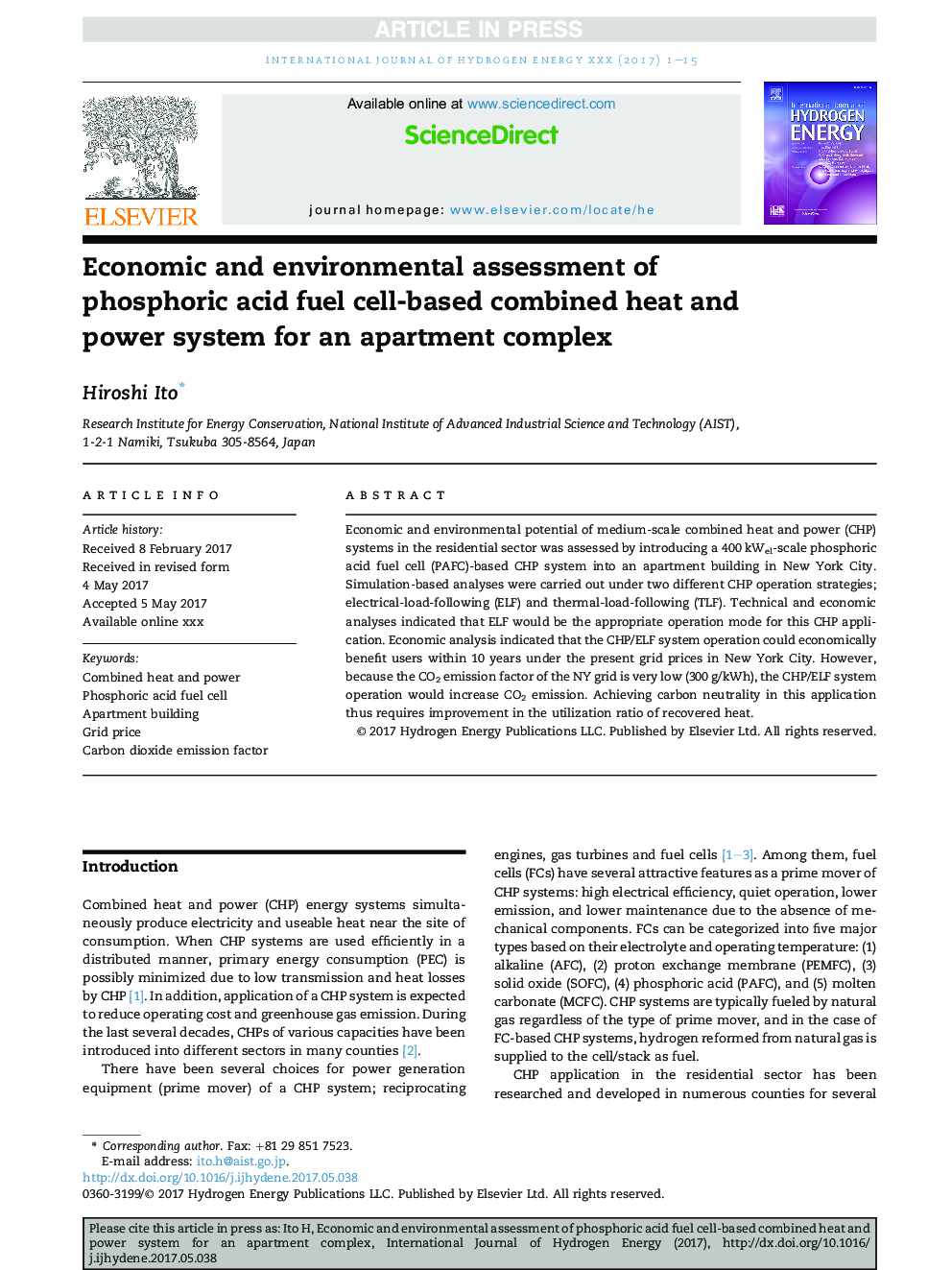| Article ID | Journal | Published Year | Pages | File Type |
|---|---|---|---|---|
| 5146572 | International Journal of Hydrogen Energy | 2017 | 15 Pages |
Abstract
Economic and environmental potential of medium-scale combined heat and power (CHP) systems in the residential sector was assessed by introducing a 400Â kWel-scale phosphoric acid fuel cell (PAFC)-based CHP system into an apartment building in New York City. Simulation-based analyses were carried out under two different CHP operation strategies; electrical-load-following (ELF) and thermal-load-following (TLF). Technical and economic analyses indicated that ELF would be the appropriate operation mode for this CHP application. Economic analysis indicated that the CHP/ELF system operation could economically benefit users within 10 years under the present grid prices in New York City. However, because the CO2 emission factor of the NY grid is very low (300Â g/kWh), the CHP/ELF system operation would increase CO2 emission. Achieving carbon neutrality in this application thus requires improvement in the utilization ratio of recovered heat.
Related Topics
Physical Sciences and Engineering
Chemistry
Electrochemistry
Authors
Hiroshi Ito,
